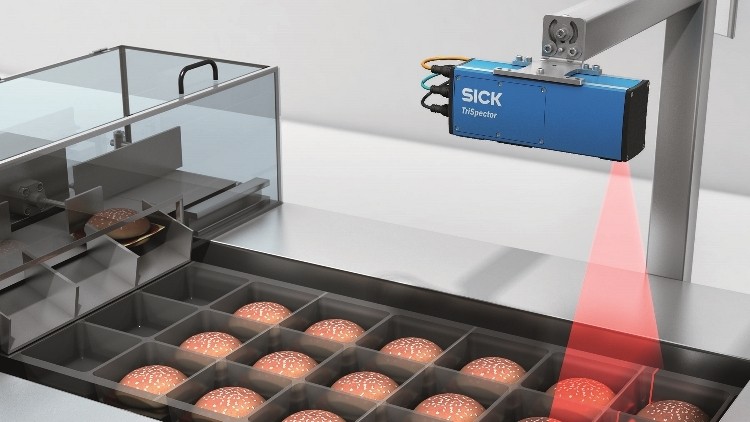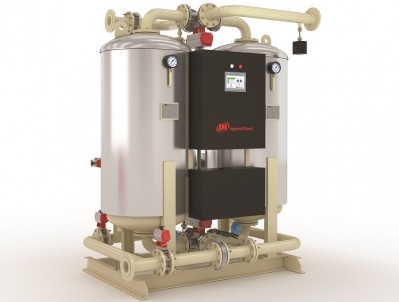DETECTION & INSPECTION
Food detection systems key to boosting efficiency

Product recalls are every food and drink manufacturer’s worst nightmare, as the financial and reputational costs can be devastating.
So, the fact that recalls appear to be becoming more prevalent, with the Food Standards Agency issuing 145 food alerts in 2017 – up from just 56 in 2013 – will be a concern for many.
According to a recent white paper by Mettler Toledo, there has been a rise in the regularity of contaminants found in food. This, it claimed, could be attributed to several key factors such as longer supply chains, more complex food production environments and better reporting methods.
“A desire to improve operational efficiency in food plants means there is also a trend towards faster-running production lines, with products spaced closer together,” the paper, Ensuring Food Safety Through the Prevention of Physical Contamination, said. “Product inspection systems are now vital components in the modern food production environment.”
Technological defences that protect against potential contamination, ranging from X-ray, to metal detection and even vision equipment, are now able to identify a variety of rogue items, including metal, plastic and bone.
Factor in the importance of ensuring the right item makes it into the right packaging, and it’s clear that having good detection and inspection equipment is now critical.
Many manufacturers use a combination of equipment to ensure detection of a range of potential contaminants. Petrow Food Group, for example, has recently invested £850,000 in a new fruit processing line with a suite of functions, including X-ray, flame unit, laser, throat metal detector and automatic packing units. Of these, X-ray machines are one of the most widely used systems in the food and drink manufacturing sector.
Ciaran Murphy, quality control business manager for Ishida Europe, a major player in the X-ray sector, says that while a food manufacturer can take years to build up a brand, a single quality issue can seriously damage its reputation.
“The cost implications can be immense as well – from loss of sales to large retailer fines and the logistics in arranging a product recall, plus potential legal action,” he says.
Increasing automation of processing and packing operations leaves fewer opportunities for human intervention to spot any problems says Murphy.
“In terms of preventing contaminants in products, X-ray inspection systems have the versatility to spot a much wider range of foreign bodies, including glass, dense plastic, stone and rubber,” he says. “Foreign bodies can be detected through aluminium foil and also in tins, regardless of the temperature or the salt and water content of the product.”
Ishida has three advanced X-ray systems including the IX-EN series, an affordable entry-level inspection machine, and the IX-GN, which can detect pieces of stainless steel as small as 0.3mm in diameter, plus aluminium, glass, stones, rubber, dense plastic and shells and at high speeds. Its IX-G2 series, meanwhile, has a dual energy sensor that detects low-density objects, even in varying thickness or overlapping products.
Some manufacturers may feel that metal detectors are more than sufficient for their needs. However, Nigel King, founding owner of Advanced Inspection Services (AIS), cautions against this. “If manufacturers need to find a difficult metal contaminant, such as a stainless-steel wire, or very small metal object in an application ... then X-ray technology is the only solution.”
Integrated X-ray inspection technologies typically detect contaminants as small as 2mm – often the minimum detection requirement stipulated by brand owners, he says.
However, on production lines involving powder or flour, contaminants can be smaller than that. Enter the AIS X-Ray Micron Scan, a high-resolution sensor designed to detect foreign bodies such as metal bits as small as 0.2mm and pieces of glass measuring 1mm or larger.
X-ray can also be used across several critical control points, adds Christy Draus, marketing manager for Eagle Product Inspection. “Advanced technology allows a manufacturer to inspect products at different stages in the process, from raw materials and ingredients to final product and cases,” says Draus.
Eagle’s Bulk 415 PRO and Bulk 540 PRO X-ray machines allow food firms to detect potential foreign bodies, such as metal, glass, calcified bone, stone and any other dense contaminants in raw material in the early stages of production. It also offers X-ray machines designed for raw meat and poultry, while its EPX100 can identify contaminants in packaged products.
Neil Sandhu, national product manager for imaging, measurement, ranging and systems at Sick UK, suggests the monitoring of packaging is crucial. Sick recently launched the LabelChecker, an ‘off-the-shelf’ label inspection product that has the ability to read and verify text, numbers, barcodes and 2D codes, and to check label design and print quality.
The unit checks for correct label and content and sends a warning when the label print quality drops below a set value. 3D vision sensing and camera tools to identify contaminants are also growing in popularity, Sandhu claims. Sick says its TriSpector 1000 offers real-time 3D vision sensing without the need for additional programming.
“Input the requirements via the display on the unit and the TriSpector will start inspecting and communicate with your factory control communications network,” Sandhu says.
Sick also offers a camera product that is able to identify issues on the production line. The system works on a four-step process: take a picture, analyse, make a decision, and take action – which can be anything from a rejection on the line to sending information to the plant operators.
Sandhu says: “These cameras are smart devices that not only take a picture like a normal camera but also have some easy-to-use, but quite advanced algorithms allowing them to indicate whether the product is acceptable or not.”
As an example, Sick was asked to help a major drinks company that had to recall one of its brands due to issues with seals and caps on its bottles.
“We put in a camera that was able to detect there was an issue with a particular area on the bottle,” Sandhu explains.
Whatever the requirements for a production line, having the right software in place can also be a crucial tool in the fight against food recalls. Rob Stephens, chief executive of software provider Systems Integration, claims that regardless of the data from the “various different bits of kit” provided at a factory, from metal detectors to scanners, a software package is needed to manage the data and the equipment. “You need a system that verifies that the kit works.”
The raft of technologies to protect against production line contaminants is broadening all the time. With food and drink increasingly produced on high-volume factory lines, ensuring the correct detection and inspection systems are in place is essential.















